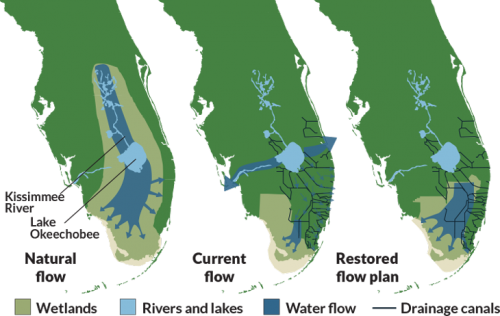According to the IPBES biodiversity loss summary report, changes in land and sea use throughout the world are one of the top 5 causes of biodiversity loss.
The report notes that agriculture expansion is the most widespread form of land-use change globally, with more than one-third of the land surface being used to grow crops or farm animals.
“This expansion, alongside a doubling of urban area since 1992 and an unprecedented expansion of infrastructure linked to growing population and consumption, has come mostly at the expense of forests (largely old-growth tropical forests), wetlands and grasslands,” reads the report.
To put that into perspective, more than 85 percent of the world’s wetlands that existed in 1700, were gone by the year 2000.
In Florida, we can relate on so many levels. We are home to one of the world’s largest wetlands, the Everglades National Park. And, agriculture is Florida’s second largest industry next to tourism.
A separate summary report of land use and cover in Florida over the past 100 years compiled by researchers at the University of Florida and Florida State University found that agriculture in Florida has led to “land clearing, drainage projects, the introduction of invasive species, and pollution.”

The report’s authors add that development, tourism and transportation are also to blame for a large portion of these land use changes.
“In creating the ideal Florida community, destination, or attraction, developers directly and indirectly caused significant changes to the natural landscape and resources of the state, fragmenting and degrading natural landscapes, introducing invasive species, and exploiting natural resources.”
The authors note that “as future changes continue to occur as a result of climate change and population growth, it will be more important than ever to conduct careful land use planning and management so that we can preserve these resources, and maintain the qualities that make Florida the special place that it is today.”
Read the full report titled, Florida Land Use and Land Cover Change in the Past 100 Years at: http://floridaclimateinstitute.org/docs/climatebook/Ch02-Volk.pdf
Next: Invasive Species